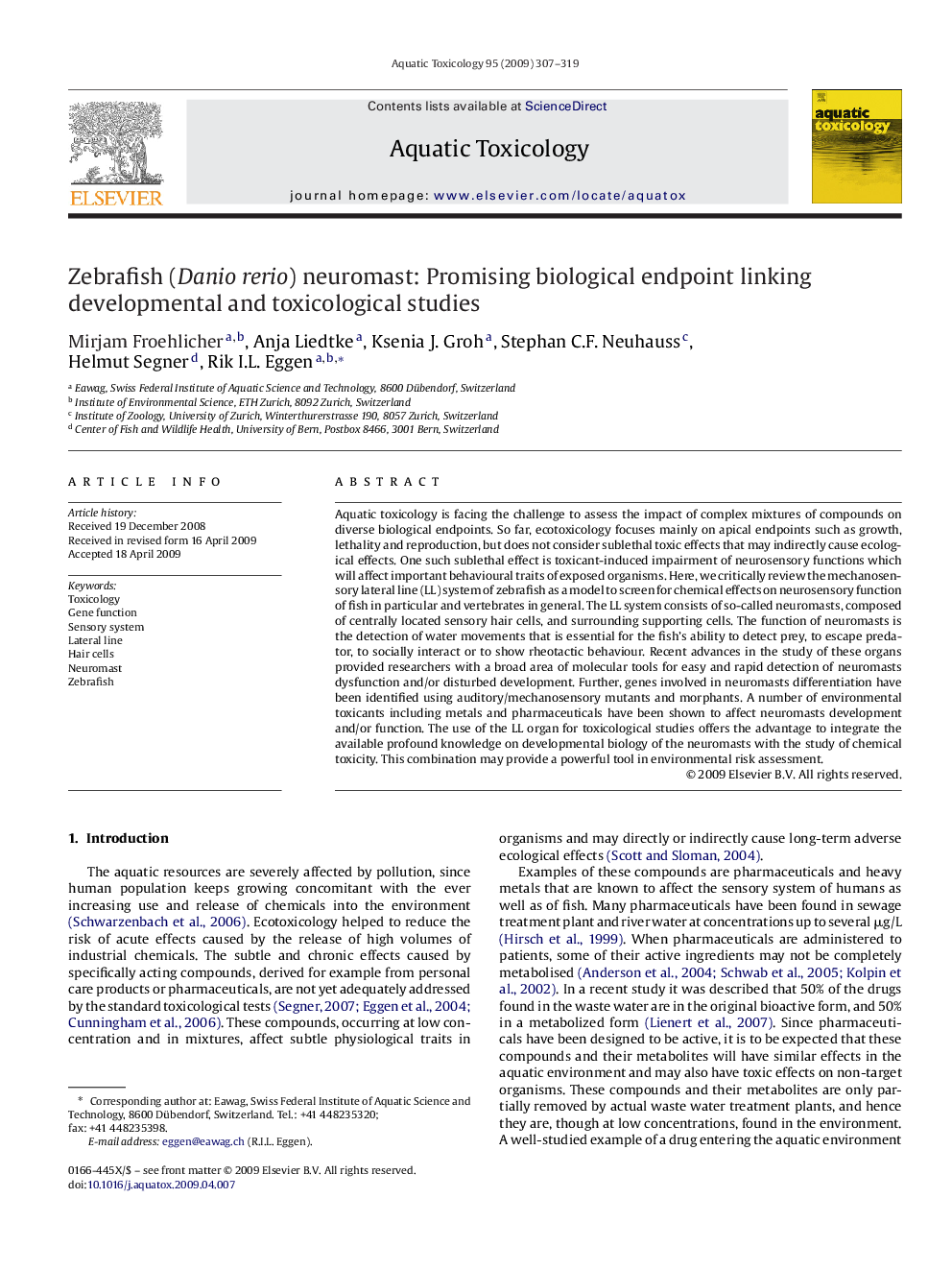| Article ID | Journal | Published Year | Pages | File Type |
|---|---|---|---|---|
| 4530390 | Aquatic Toxicology | 2009 | 13 Pages |
Aquatic toxicology is facing the challenge to assess the impact of complex mixtures of compounds on diverse biological endpoints. So far, ecotoxicology focuses mainly on apical endpoints such as growth, lethality and reproduction, but does not consider sublethal toxic effects that may indirectly cause ecological effects. One such sublethal effect is toxicant-induced impairment of neurosensory functions which will affect important behavioural traits of exposed organisms. Here, we critically review the mechanosensory lateral line (LL) system of zebrafish as a model to screen for chemical effects on neurosensory function of fish in particular and vertebrates in general. The LL system consists of so-called neuromasts, composed of centrally located sensory hair cells, and surrounding supporting cells. The function of neuromasts is the detection of water movements that is essential for the fish’s ability to detect prey, to escape predator, to socially interact or to show rheotactic behaviour. Recent advances in the study of these organs provided researchers with a broad area of molecular tools for easy and rapid detection of neuromasts dysfunction and/or disturbed development. Further, genes involved in neuromasts differentiation have been identified using auditory/mechanosensory mutants and morphants. A number of environmental toxicants including metals and pharmaceuticals have been shown to affect neuromasts development and/or function. The use of the LL organ for toxicological studies offers the advantage to integrate the available profound knowledge on developmental biology of the neuromasts with the study of chemical toxicity. This combination may provide a powerful tool in environmental risk assessment.
